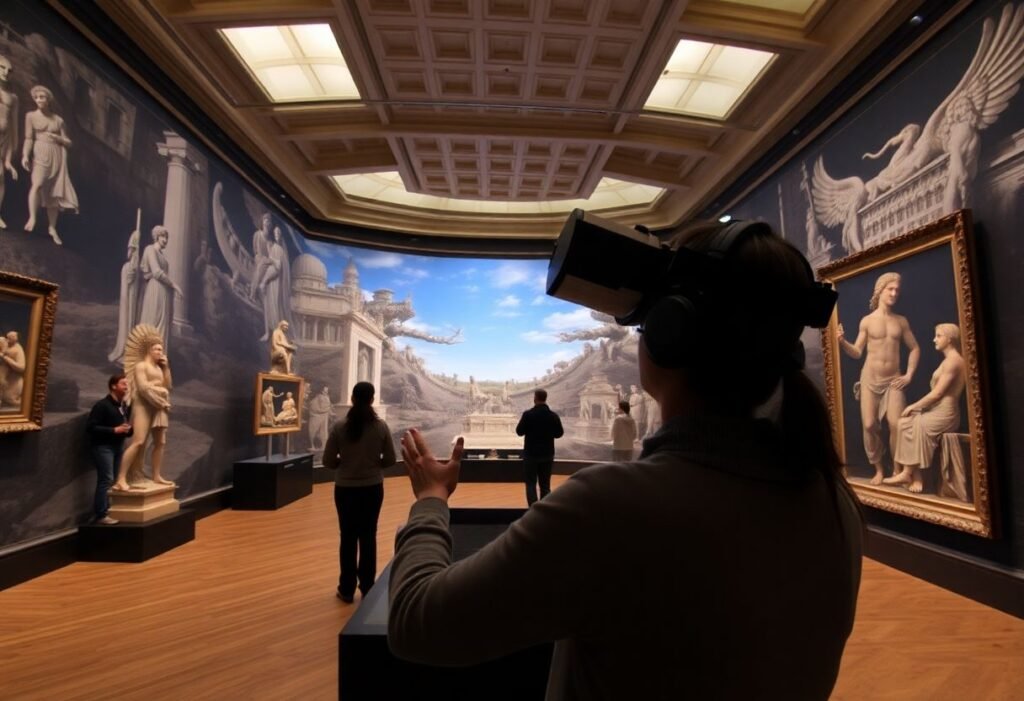The advent of virtual reality (VR) is revolutionizing how museums engage with their audiences. This transformative technology creates immersive experiences that enhance learning and retention, ultimately changing the landscape of cultural exhibition.
The Power of Immersion in Museums
Virtual reality provides visitors with a sense of immersion that traditional exhibits cannot match. By donning VR headsets, participants can step into digital recreations of historical events or interact with virtual artifacts. This level of engagement deepens understanding and appreciation, making history feel more alive and relevant. Museums are increasingly leveraging this technology to create immersive storytelling experiences that are both informative and emotionally resonant. The ability to transport visitors to a different time and place enhances their connection to the content, transforming passive observation into active participation.
Enhancing Accessibility with Virtual Reality
One significant advantage of virtual reality is its potential to enhance accessibility for diverse audiences. VR technology enables those with mobility challenges to explore museum exhibits without the physical limitations faced in traditional spaces. Furthermore, virtual tours can be designed to cater to various learning styles, offering interactive learning tools that appeal to visual and auditory learners. This democratization of museum access encourages broader participation, allowing more people to experience cultural heritage irrespective of geographical or physical barriers.
Engaging Younger Audiences through Gamification
To connect with younger audiences, museums are incorporating gamification into their VR experiences. By transforming exhibits into interactive challenges or quests, institutions can capture the attention of younger visitors who might otherwise feel disengaged. Gamified elements not only make learning fun but also encourage critical thinking, problem-solving, and collaboration among peers. This innovative approach to education is essential in a digital age where attention spans are shorter and competition for engagement is fierce.
Recreating Historical Context through Virtual Reality
Another impressive application of virtual reality in museums is its ability to recreate historical contexts. By utilizing 3D modeling and CGI, museums can provide visitors with environments that reflect different time periods. Imagine walking through ancient Rome with bustling markets or witnessing historical events like the signing of crucial treaties. These experiences allow visitors to comprehend the nuances of history in a way that traditional exhibits cannot, facilitating deeper connections to the past.
Collaborative Exhibitions Across Institutions
Virtual reality technology also fosters collaboration between museums worldwide. By sharing VR experiences, institutions can create joint exhibitions that allow visitors to explore collections from different parts of the globe, all from a single location. This collaboration enriches the visitor’s experience, providing a more comprehensive understanding of diverse cultures and histories. The ability to collaborate through virtual platforms makes shared learning possible and paves the way for innovative partnerships in the museum sector.
The Future of Museums in the Digital Age
As technology continues to evolve, the future of museums lies in their ability to adapt and innovate. Virtual reality is just one aspect of a broader trend toward digital transformation in cultural institutions. With advancements in augmented reality and artificial intelligence, museums can further enhance their offerings and attract new audiences. By embracing these technologies, museums can become vibrant, engaging spaces where visitors not only learn but also experience culture in multi-dimensional ways. The potential for innovation in the museum sector is limitless, making it an exciting field to watch in the coming years.
This article is intended for informational purposes only and does not constitute professional advice.





















